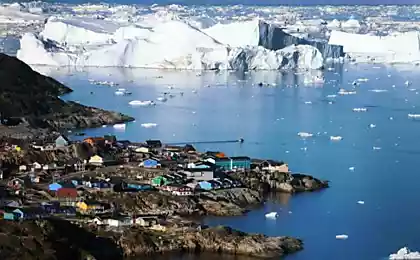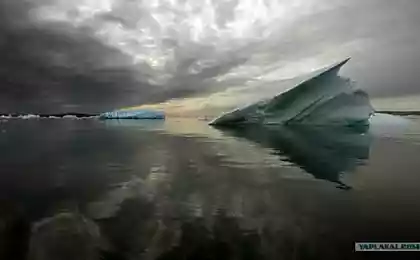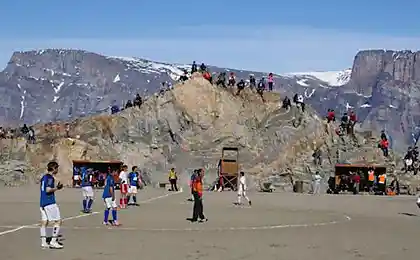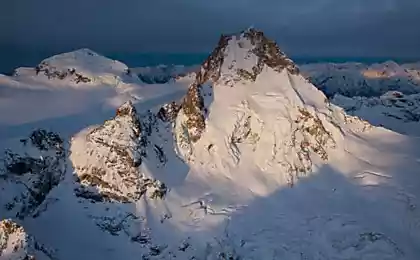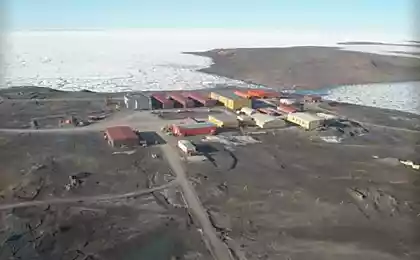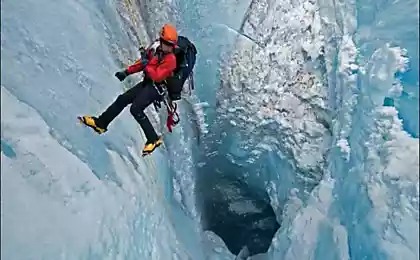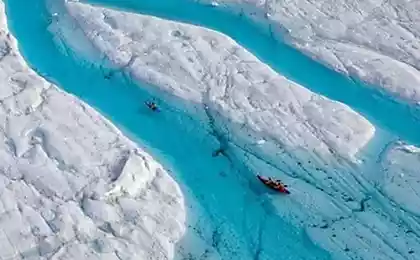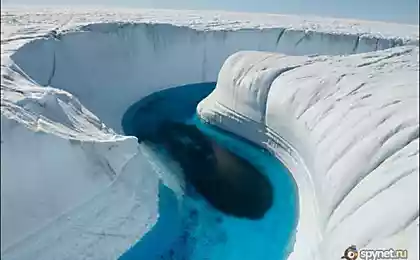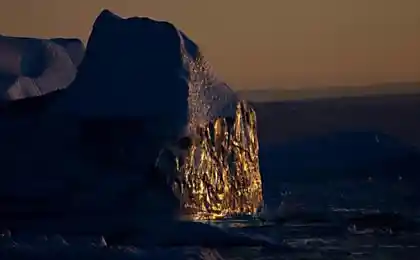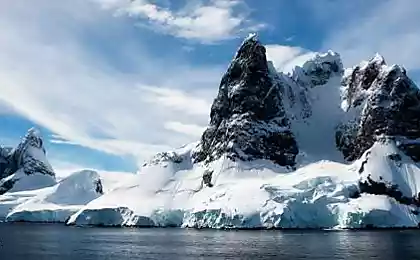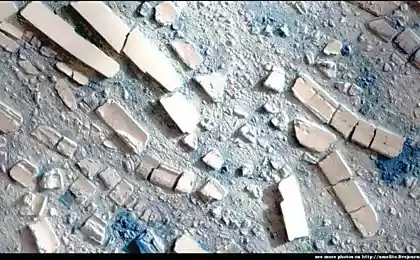796
Greenland. Melting ice
Ice - the foundation of the local culture, but it weakens the base. The entire Greenland ice sheet became less stable over the past few years due to rising temperatures and early spring thaws. "The ice cover of Greenland is no longer in equilibrium, - says the US National Science Foundation, - every year due to melting ice of local sea level rises of about 0, 5 mm. In 2007, the territory of thawed exceeded the previous record by 10%. Outskirts of Greenland are experiencing significant changes - in recent years a huge number of melt water ».
10 ph via Bigpidture
1. It is difficult to get more than Uummannaq - district in northwest Greenland Eskimo tribes in 2800, half of whom live in the settlement. (Stanley Greene / Consequences by NOOR)

2. In Uummannaq boats become more valuable than dogsleds because of the unstable ice. It also forces local men to stop the hunting of polar bears and seals and fishing - Sport, which is traditionally done by women and children. (Stanley Greene / Consequences by NOOR)

3. The boy in clothes from fur of a polar bear and seal resting on a rock in the village. Such clothing for centuries helped the Eskimos to survive in low temperatures, but less stable and shrinking glaciers not only interfere with the Eskimos to hunt, they also complicate the life of polar bears and seals. Seals need ice to rest, hunt and fish, even for calving. And the ice floes the bears use as a place to hunt seals. (Stanley Greene / Consequences by NOOR)

4. Hunters as Ole Jorgen Hammeken increasingly fed their dogs halibut, since the meat of polar bears, whales, walruses and seals are now a rarity. "It should be one of the photographer's life disappear, - says the photographer Stanley Greene - and everything else begins to melt like ice, and soon hunters Uummannaq can also disappear. Without a good ice they did not survive. They are no longer "Kings on Ice", they have nothing left. " (Stanley Greene / Consequences by NOOR)

5. Two fishing boats surrounded by fragile ice off the coast of Ilulissat, Greenland. This town is located near Uummannaq and is home to the largest glacier northwestern Greenland - Sermeq Kuyyallek. Recently, scientists have noticed that the glacier erode the warm waters of the ocean. (Stanley Greene / Consequences by NOOR)

6. The Inuit make up the majority of the population of Greenland, which, in turn, is only 55 000 people on the island the size of Texas. Greenland Eskimos share family ties with the Inuit in Canada, Alaska and Siberia. (Stanley Greene / Consequences by NOOR)

7. The signs of change Uummannaq include this field debris, most of which is lost from a cargo ship, beached a strong current. (Stanley Greene / Consequences by NOOR)
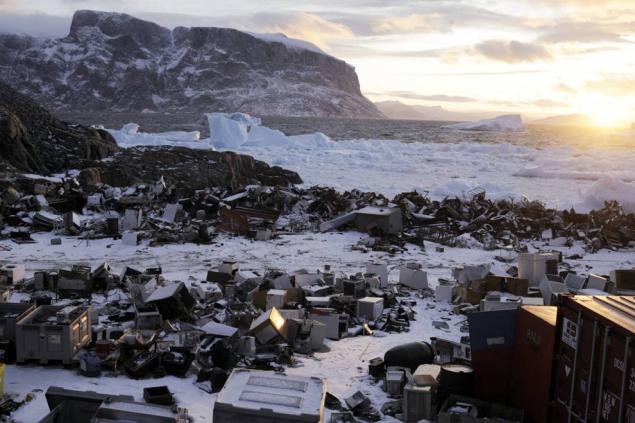
8. Ole Jorgen Hammeken studied law before you go to the hunters. In 2007, after the mail route was impossible to use because of unstable ice, he paved a different route into the interior of the island. He also appeared in several documentaries, as well as in French-Greenlandic movie "On Thin Ice" of its culture. (Stanley Greene / Consequences by NOOR)

9. Huskies enjoy all the resources around them, including small animals such as fox, hunted in limited quantities because of its fur. The number of these animals is stable, its populations are not threatened with extinction. (Stanley Greene / Consequences by NOOR)
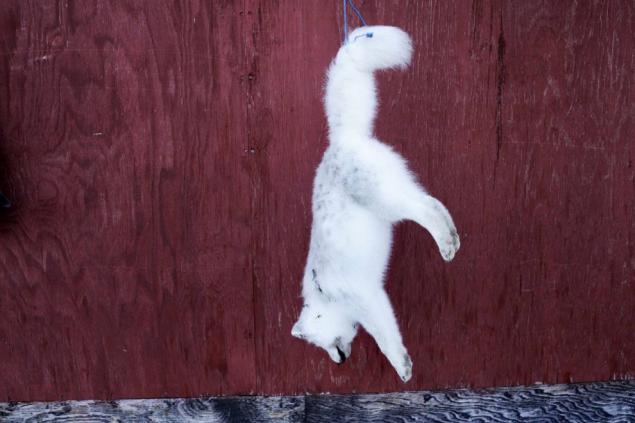
10. Hunter is an empty settlement near Uummannaq. Some hope that the melting ice around Greenland are here to help detect oil or rich in minerals. Indeed, according to the US Geological studies, 31 billion barrels of oil and gas lies off the eastern coast of Greenland, and another 18 billion - under the Arctic waters between Greenland and Canada. How will this affect the local Inuit tribes still unknown. (Stanley Greene / Consequences by NOOR)
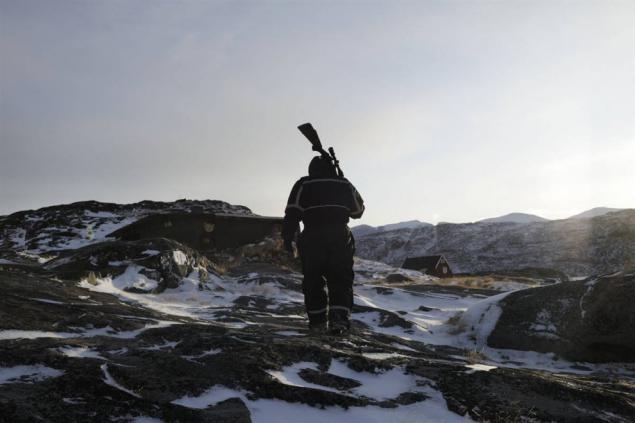
Source: http: //
10 ph via Bigpidture
1. It is difficult to get more than Uummannaq - district in northwest Greenland Eskimo tribes in 2800, half of whom live in the settlement. (Stanley Greene / Consequences by NOOR)

2. In Uummannaq boats become more valuable than dogsleds because of the unstable ice. It also forces local men to stop the hunting of polar bears and seals and fishing - Sport, which is traditionally done by women and children. (Stanley Greene / Consequences by NOOR)

3. The boy in clothes from fur of a polar bear and seal resting on a rock in the village. Such clothing for centuries helped the Eskimos to survive in low temperatures, but less stable and shrinking glaciers not only interfere with the Eskimos to hunt, they also complicate the life of polar bears and seals. Seals need ice to rest, hunt and fish, even for calving. And the ice floes the bears use as a place to hunt seals. (Stanley Greene / Consequences by NOOR)

4. Hunters as Ole Jorgen Hammeken increasingly fed their dogs halibut, since the meat of polar bears, whales, walruses and seals are now a rarity. "It should be one of the photographer's life disappear, - says the photographer Stanley Greene - and everything else begins to melt like ice, and soon hunters Uummannaq can also disappear. Without a good ice they did not survive. They are no longer "Kings on Ice", they have nothing left. " (Stanley Greene / Consequences by NOOR)

5. Two fishing boats surrounded by fragile ice off the coast of Ilulissat, Greenland. This town is located near Uummannaq and is home to the largest glacier northwestern Greenland - Sermeq Kuyyallek. Recently, scientists have noticed that the glacier erode the warm waters of the ocean. (Stanley Greene / Consequences by NOOR)

6. The Inuit make up the majority of the population of Greenland, which, in turn, is only 55 000 people on the island the size of Texas. Greenland Eskimos share family ties with the Inuit in Canada, Alaska and Siberia. (Stanley Greene / Consequences by NOOR)

7. The signs of change Uummannaq include this field debris, most of which is lost from a cargo ship, beached a strong current. (Stanley Greene / Consequences by NOOR)

8. Ole Jorgen Hammeken studied law before you go to the hunters. In 2007, after the mail route was impossible to use because of unstable ice, he paved a different route into the interior of the island. He also appeared in several documentaries, as well as in French-Greenlandic movie "On Thin Ice" of its culture. (Stanley Greene / Consequences by NOOR)

9. Huskies enjoy all the resources around them, including small animals such as fox, hunted in limited quantities because of its fur. The number of these animals is stable, its populations are not threatened with extinction. (Stanley Greene / Consequences by NOOR)

10. Hunter is an empty settlement near Uummannaq. Some hope that the melting ice around Greenland are here to help detect oil or rich in minerals. Indeed, according to the US Geological studies, 31 billion barrels of oil and gas lies off the eastern coast of Greenland, and another 18 billion - under the Arctic waters between Greenland and Canada. How will this affect the local Inuit tribes still unknown. (Stanley Greene / Consequences by NOOR)

Source: http: //
